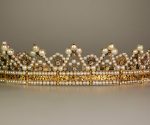Australian School Fees on the Rise, Funding Gaps Grow
Recent reports are showing that increasing school fees are affecting the education children receive in Australia, including incidents of children being left out of extracurricular events and parents being publicly shamed.
Timna Jacks writes for The Age that there are large variations in how Australian schools have interpreted regulations involving school fees. This results in wealthier schools often raising more money that poorer schools.
“I think that is objectionable … better off schools will have more of a chance to get parents to pay, and therefore have more resources than schools that are serving disadvantaged communities,” Says Trevor Cobbold, the national convenor for Save Our Schools.
While parents are taking issue with school fees rising teachers are having difficulties making ends meet. Australian teachers can make as little as $ 20 an hour, which often leads to them having to take second or even third jobs. Patricia Rosas, a prime example of the problem, works as a cook and also has a babysitting job.
There are around 80,000 educators working in the day-care sector in Australia and 97 percent are female, points out Anna Patty for the Sydney Morning Herald. While women get paid less by the hour than their male counterparts, they are just as qualified. In Patricia Rosa’s case, she has a degree in teaching from South America and a diploma from Australia in children’s services.
The issues of pay and rising fees both lead to a closer look at the Australian school system policies and bring up the question of how both of these problems can exist simultaneously. Richer schools in Australia are able to raise their own money and extremely poor ones get help through federal funding, but there appears to be an issue in the middle ground where there is no extra funding for these middle-class schools although they aren’t doing well enough on their own.
“To the credit of the Government, they do subsidize schools with more complex environments with more money. Our parents probably make up the difference, so you could argue there’s an inequity the other way,” Said Phil Johansen, principal at Highgate School.
Tim Williams of the Advertiser notes that Brighton Secondary school has the highest charged amount at $ 980 a year over the minimum of $ 303 a year. The large discrepancy can be attributed to low regulation levels among the school systems. Some schools charge for laptop fees, while others have a ‘bring your own’ attitude.
The Education Department has taken note of these problems and has decided to begin auditing to make sure the policies are being followed. With those policies being as open for interpretation as they are, there is some question as to whether that will change much. To help support the parents paying the fees, the Education Department has also instituted a person at schools to contact should parents need a payment plan, subsidies, or need the costs waived.
“The revised Parent Payment policy ensures that all students can take part in school activities and have the materials they need to learn, regardless of their background,” An Education Department spokesman said.
In addition to the Education Department beginning to try and set things right with fees, there is a Fair Work Commission case that is seeking pay raises for women teachers of between 39 and 72 percent.
The post Australian School Fees on the Rise, Funding Gaps Grow appeared first on Education News.









Comments are closed.